We all love upgrades!Today I just wanted to update the team on a few new upgrades that are now in pl
|
We all love upgrades!Today I just wanted to update the team on a few new upgrades that are now in pl
|
Think about the recent commercials you’ve seen advertising health and fitness? What activity do you see? Running, walking, or other aerobic exercise? Weight training just never seems to get the same spotlight. In fact, it’s often depicted as a specialty offshoot rather than a core component of general fitness. Weight training, however, plays a very important role in health and weight loss. If you have a habit of spending most of your time on a treadmill or an elliptical for your workouts, this article is for you! You may be missing out on some of the most significant exercise benefits.
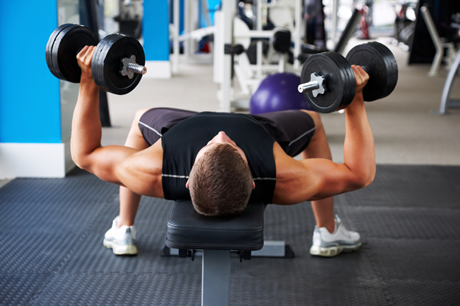
The major goal of weight training is to generate a force on your body it has not experienced in the past–a force that is enough to make it adapt but not so much that it could cause injury. For example, if you haven’t done pushups since you were in high school, doing one set of ten pushups could be enough stress for your body to adapt for a week. The next week, you might need to do two sets. Provided you don’t have an existing injury, this can be enough stress to for your muscle tissue to grow stronger and your bones to become denser.
The other extreme goes something like this (a true story). Earlier in my training career, I was organizing some of the equipment on the free weight floor. Behind me, I heard someone gasp “A little help?!” I spun around and saw a man in his forties stuck under a bar on the bench press, which he had loaded with 225 pounds (two 45s on each side of the bar). I found out he had just joined that day and hadn’t done any strength training since playing football in high school. The 225 pounds was what he used to lift. He thought he’d give it a try that day some two decades later. His story presents the perfect example of using far more force than the body should be exposed to. Had I not been there, he could’ve been seriously injured trying to get the weight off himself.
Fortunately, this man’s example is pretty rare. More commonly, people are afraid to push themselves hard enough. If you have a tendency to pick the same equipment, use the same weight and do the same number of repetitions each workout because it’s comfortable for you, you’re really just going through the motions. It’s better than sitting at home on the couch, but it isn’t enough to effectively change your body.
To benefit from resistance training, you must (in order of priority):
Without a basic level of knowledge about exercise technique, the amount of weight you can move matters little. In fact, if you don’t do an exercise properly, you’re not going to get much benefit even if you do points two through four correctly. I would strongly encourage you to consider the benefit of working with a health and fitness professional, even if it’s just for a handful of sessions. I know there’s a perception that a personal trainer is a luxury. Your body is the most valuable asset you have, and when it functions properly, you become even more valuable as a parent, employee, friend or spouse.
What’s interesting is that if you watch small children, they squat, push and pull (the three foundational movements) and move with almost perfect form. As we grow up and spend more time sitting, our posture changes. Twenty years later, when we decide to start a fitness program, our poor range of motion prevents us from moving the way we were supposed to. A trainer can help us overcome those limitations in the safest, most efficient way, which means we’ll benefit from our exercise programs sooner and more intensively.

Most people think that to lose weight, you need to walk, run, cycle or take group fitness classes. It’s almost ingrained in our minds that you have to do cardio to lose body fat. Cardio does play a role in weight management, but its major purpose is to help train the body to prefer fat for fuel over carbohydrates, not to burn calories.
Unfortunately, cardio training–particularly when excessive–also has a downside. Endurance training can cause the body to lose muscle tissue. Think about it. If you’re going to spend a lot of time running, your body won’t want extra muscle tissue to lug around. It will retain its slow-twitch, endurance-type of muscle tissue and get rid of the fast-twitch, strength-type muscle fiber.
Even worse, many people cut back significantly on their energy intake when they attempt to lose weight. Low-calorie diets are notorious for causing muscle loss–often at the same rate as people lose fat! If you undereat, it sends a signal to the body to save energy. Muscle is much more metabolically active (it burns a lot more energy) than fat. The body will logically use fat cells for energy but simultaneously get rid of muscle to conserve energy.
When comparing the results of a low-calorie diet plus cardiovascular/endurance training against a low-calorie diet plus resistance training, the difference was significant. Those following the low-calorie diet plus resistance training experienced far less muscle loss and actually raised their resting metabolic rate. The endurance group lost more weight, but they also lost a lot more muscle tissue and ended up with lower resting metabolic rates. Both groups saw similar improvements in cardiovascular conditioning. Researchers have also found–even without a change in diet–that resistance training helps to reduce the levels of fatty liver, ( a condition most commonly associated with alcoholism but also caused by poor diet and lack of activity) in which the liver stores an excessive amount of carbohydrates (especially fructose) as fat. (That said, diet still has more of an effect for improving this condition.)
Cardiovascular/endurance training has its legitimate place in a fitness and weight loss program. However, know that well-planned resistance training should also have an essential role in your program.

While you probably don’t wish for the physique of a male or female bodybuilder on the cover of a magazine, few people imagine their ideal physique as thin, bony and lacking any kind of muscular definition. If you’re like most people, there’s something between these two extremes that describes what you’re after. Strength training helps build muscle tissue to create a lean, curvy look in one’s shoulders, arms and hips, and to help create a waist that narrows from the top to bottom of one’s back. It’s important to note that people don’t need to worry about becoming big, bulky and thick from strength training unless they’re choosing to “artificially enhance” their natural hormone production.
Without resistance training, it’s difficult to retain much of any muscle during a weight loss program, a change that will leave people a skinnier version of themselves but still holders of a high body fat percentage. Weight training can help retain–and increase–muscle mass as well as improve bone density.
As we age, we will lose muscle. It’s unfortunate, but it is a reality of aging. The more muscle you have to start with from your younger years, the more you’ll have in your later years. Your muscle helps your whole skeleton become more functional and protected as you age. Without as much muscle, you won’t have the same kind of support when you step off a curb the wrong way. Without enduring the forces to build muscle, your bones won’t maintain their density.
Whatever lean body mass you have today is probably all you’ll get for the rest of your life if you don’t do something about it. If you don’t eat enough protein and give your body enough healthy physical stress, you may end up with a severe shortage of muscle mass long before the end of your life. The result could mean spending many years needing assistance or avoiding extra movement because you don’t have an appropriate level of muscle tissue or bone density. Strength training is an investment in your lifelong health and mobility. Paired with the right nutrition plan, you’ll at least maintain your lean mass longer if not increase it.
At the extreme of physical aging, we see diseases like arthritis. Often, people who are faced with this or other degenerative diseases are afraid to do exercise like resistance training. This is unfortunate because even those with rheumatoid arthritis benefit from increased lean body mass when they strength train properly.

Ideally, both types of exercise should be incorporated over the course of a week. For the purpose of weight loss, nutrition is the major determinant as to whether we lose weight. However, the type of exercise we use to complement our nutrition can determine what kind of weight we actually lose–fat or muscle. Resistance training helps to ensure most of the weight lost is fat, but a combination of strength training with some cardiovascular exercise is probably ideal in terms of health and weight management.
Finally, if you feel the most comfortable doing cardio, or if you’ve been doing the same resistance training routine since leg warmers were in fashion, ask a Health and Fitness Professional for some guidance. He/she can design a personalized program for progressing in your resistance training goals and can guide you in achieving proper form and technique.
You can lose body fat and maintain lean body mass with good nutrition and a strength training program. You can accelerate your fat loss by adding cardio, but you can’t maintain your muscle, range of motion and bone density without strength training. You know the advantages of weight training for your body. Take the next step in claiming those benefits for your weight loss and wellbeing.
Max Reynoso NASM-CPT, PES, CES, Physical Therapist Aide, Kettlebell Cert, Power Plate Cert. Metabolic Tech, is Fitness Professional at the Life Time Fitness in Gilbert, AZ. He’s been in the fitness field for 20 years helping people take control of the way the look and feel. If you wish to setup a Training Solution Consultation with him so he can review your current fitness status and help you design a plan of action for 2017, contact him at mreynoso@lifetimefitness.com or call 530-522-8483
When it comes to weight loss, chances are you’ve been told that carbs (at least the starchy ones) are a no-no when it comes to what you can eat in order to net the results you are looking for.
And if you’ve worked with a Life Time Trainer, you may have been advised to prioritize non-starchy vegetables and some fruit as your main source of carbohydrates at mealtime.
This recommendation is a good one, as we live in world that prioritizes highly-processed foods for their convenience and tasty flavor profile, so it’s often really easy to overeat carbohydrates in comparison to our fat and protein needs.
But, for most people, there is a little wiggle room when it comes to having starchy carbohydrates on the menu and still stay on track toward your weight loss goal. It just takes a little focus on portion size and timing to make them fit into your eating routine.
Carbohydrate recommendations should be individualized. What one person can intake and utilize as fuel is dependent on their genetics, what their activity level is (during the day and at the gym) along with whether or not their metabolism is utilizing them well.
Knowing that most processed or simple carbohydrates (added sugar, cereals, chips and known junk foods) don’t promote nourishment or health, they’re likely never recommended on any meal plan promoting weight loss. And although you’ll find our top seven carbohydrate or “starchy” food recommendations below, I always point out that portion size is key (measure if you’ve never measured them before) and try to incorporate them post-activity, such as breakfast after your morning workout.
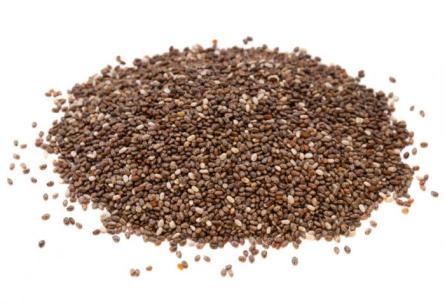
2 Tablespoons of Chia Seeds: 120 calories, 10g of carbs, 10g of fiber
Chia seeds are a superfood that you need in your life. Not only are they an amazing source of fiber (hello blood sugar regulation and feeling full longer), they are also packed with other nutrients, including fatty acids, certain vitamins, minerals and antioxidants. This type of nutrient profile supports energy, digestion and can serve as a natural appetite suppressant.
If you’ve never used chia seeds before, try adding them to your morning protein shake, smoothie bowl or on top of your favorite salad. My favorite way to consume them is as a pudding or overnight-oatmeal-like breakfast: Add ¼ cup of seeds to 1 Cup of coconut milk and 1 tsp of vanilla extract. Let it sit overnight in your refrigerator (seeds will gelatinize and turn into a pudding-like texture) and enjoy in the morning by topping it off with some fresh berries.
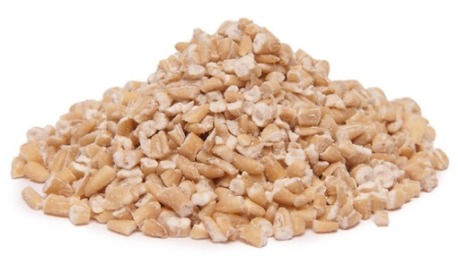
¼ cup uncooked Steel-Cut Oats: 150 calories, 27g of carbs, 4g of fiber
When it comes to oats or oatmeal, most people have tried quick oats or rolled oats before. A common breakfast in the American household, most instant oatmeal is loaded with sugar and artificial nonsense. If cereal is your jam, I would steer you toward using steel-cut oats, as an option for breakfast or as an addition to your protein shake or protein energy ball. Steel-cut oats (also called Irish or Scotch oats and are naturally gluten-free) are a less processed oat and is higher in fiber. Because of this, the glycemic index or impact to blood sugar is lower while keeping your body fuller longer and keeping your energy up.
Steel-cut oats do take a little longer for preparation (remember they have minimal processing), but they are super simple to use for make-ahead oatmeal in the morning and a go-to in my house for breakfast. They have a chewier texture so they fill you faster, often leaving you consuming less than you normally would. I like to top mine with some fresh fruit and cinnamon plus add a little almond or vanilla extract.
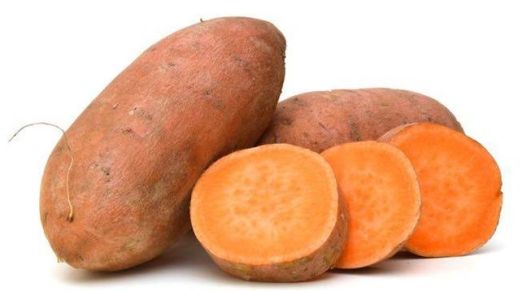
1 medium Sweet Potato (3.9 oz): 100 calories, 27g of carbs, 4g of fiber
Sweet potatoes are rich in many vitamins and minerals and provide excellent levels of beta-carotene (antioxidant), vitamin C and potassium. Known for their bright orange color, they can also be found with a purple tone. They are often deemed healthier than regular potatoes due to their lower glycemic index and because they are higher in fiber and have high levels of Vitamin A. These nutrients can help support blood sugar and help reduce oxidative damage and cancer risk.
Sweet potatoes taste amazing – and there are a plethora of ways to consume them. You can bake, roast, broil and even slow cook them. Most of my clients consume them with just a little bit of butter, but you can add in yummy spices such as nutmeg, ginger or cumin to help improve their flavor profile even further. Serve some cubed sweet potato alongside your breakfast omelet or your other protein and vegetables at meal time or eat it mashed with some cinnamon and butter for dessert.
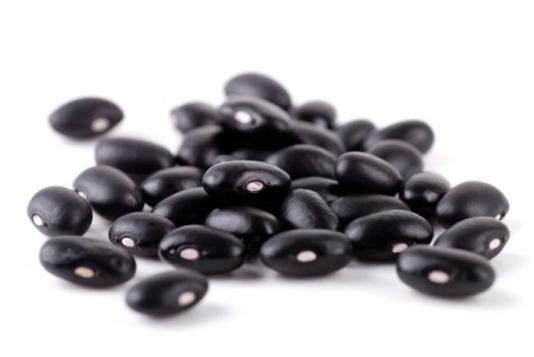
1/2 cup canned low-sodium black beans: 109 calories, 20g carbs, 8g fiber
One serving of black beans provides almost one-third of your daily fiber needs along with numerous vitamins and minerals, including magnesium, protein and diseasing fighting antioxidants. Their nutrient profile has them linked to helping protect against inflammation, certain cancers and diabetes and improving digestion. Not only are they extremely affordable and versatile, but their fiber content makes them a great energy source while keeping you full for a long time.
Because cooking dried beans can take a long time, most people opt in for a precooked/canned option. Go for organic or in a BPA-free and low-sodium option and consider adding them to your morning eggs, as a side along your chicken breast at meal time or to your favorite chili recipe.
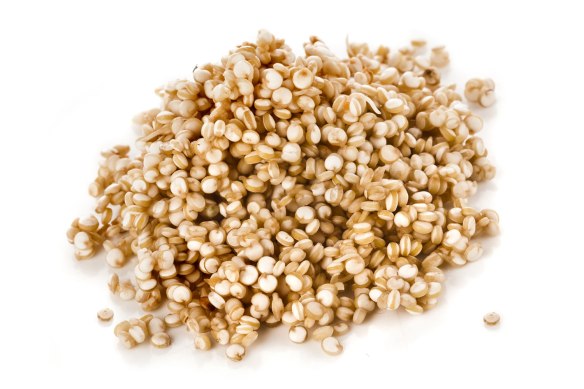
½ cup of cooked Quinoa: 111 calories, 20g of carbs, 3g of fiber
Quinoa has become a popular whole grain over the last few years. Often touted for its protein content (it contains all nine of the essential amino acids), it also is naturally gluten-free, a great source of fiber and is often described as a superfood. It can have an impact on disease prevention, due to its antioxidant and nutrient profile, including high levels of magnesium.
On its own, quinoa can taste sort of plain. But if you add the right spices, it can make for a nice side dish at dinner, or be used (similar to chia or steel cut oats) as an oatmeal like option for the mornings. I like adding some butter, pecans and cinnamon to mine. But you can also consider eating it as a base to your salads, stuffed peppers or stir fry.

1 cup of cooked squash: 40 calories, 10g of carbs, 2.2g of fiber
Spaghetti squash is a favorite in my house. It’s one of those suggestions often offered up in lieu of box pasta (to cut the carbs, but add nutritional value), yet, if you’ve never prepared this vegetable before, you might be hesitant to try. Spaghetti squash is part of a winter squash family that are all great sources B-vitamins, Vitamin C, folic acid, fiber and potassium. Spaghetti squash has the lowest of calories and carbohydrates than any other winter squash and is 35 grams lower in carbohydrate when compared to 1 cup of pasta noodles.
There other several ways to cook spaghetti squash, including baking, boiling, microwaving (cut in half, first) or slow-cooking it. Once tender, simply take a fork to the inner flesh and like magic, it comes out like spaghetti. Serve it up with some homemade tomato sauce and ground beef or turkey and you’ve got a perfect comfort food dinner.

1 cup mashed pumpkin: 49 calories, 12g of carb, 3g of fiber
Did you know one cup of pumpkin can provide a day’s worth of your vitamin A needs? Pumpkin is loaded with other nutrients, including Vitamin C, fiber, potassium and manganese — all of which help your body fight infection and protect your cells from oxidative damage. These essential nutrients also boost the immune system, decrease inflammation and potentially regulate blood sugar.
Pumpkin can be cubed and roasted in the oven and served over a salad or with other vegetables at dinner. You can also puree pumpkin and add it to shakes/smoothies or your favorite soup or chili recipe. If you don’t want to prepare the actual squash, purchase canned pumpkin (100% pumpkin) to add to your favorite protein shake in the morning.
Have access to this blog and much more by downloading my iPhone or Android App 

Max Reynoso NASM-CPT, PES, CES, Physical Therapist Aide, Kettlebell Cert, Power Plate Cert. Metabolic Tech, is Fitness Professional at the Life Time Fitness in Gilbert, AZ. He’s been in the fitness field for 20 years helping people take control of the way the look and feel. If you wish to setup a Training Solution Consultation with him so he can review your current fitness status and help you design a plan of action for 2016, contact him at mreynoso@lifetimefitness.com or call 530-522-8483
We’re in the middle of the holiday season. While the holiday season is about much more than food, the five-week period between Thanksgiving and New Year’s is filled with more treats and sweets than people experience at any other part of the year. There is a way to manage your weight while still enjoying holiday foods. Following the suggestions below can help you keep the holiday weight off and still have a good time.
Pick your “treat” meals and enjoy them

Around the holidays, special foods are often available everywhere, every day. While it would be nice to be able to indulge a little each day, it can be pretty difficult to manage weight while having a couple of cookies every day. From Thanksgiving through New Year’s, there are 37 days this year. Eating an extra 300 calories per day for 37 days results in an extra 11,100 calories. In addition, many people find the weekends get more out of hand with holiday parties and get-togethers. If Friday through Sunday result in an additional 2000 excess calories, which might be conservative, that’s another 12,000 calories. Eating an excess 23,000 calories theoretically results in an extra 6.5 pounds of pure fat. If these extra calories were coming through lean meat and vegetables, they may not result in much weight gain, but when they’re coming from sugar and other processed carbohydrates, and (sometimes) alcohol, the weight-gain can be significant.
Having said all that, many people can find more success with simply enjoying their holiday get-togethers and making some sacrifice during the rest of the week. If you have something to look forward to at the end of the week, you may find it easier to eat a reduced-calorie diet during the other days. Skip the office “goodies” and avoid buying sweets for your desktop or countertop. If you’re eating five to six times per day, you’ll eat 35-42 meals per week. If you get off your plan on Friday and Saturday night through the holidays, it’s only two of those total meals during the week. Eating a reduced-calorie diet, higher-protein diet five days per week and enjoying a couple of holiday parties or get-togethers each week can easily result in maintenance of body weight through the holidays. Depending on how well people eat during the week, they may even find they lose weight during the holiday season.
Eat your protein first
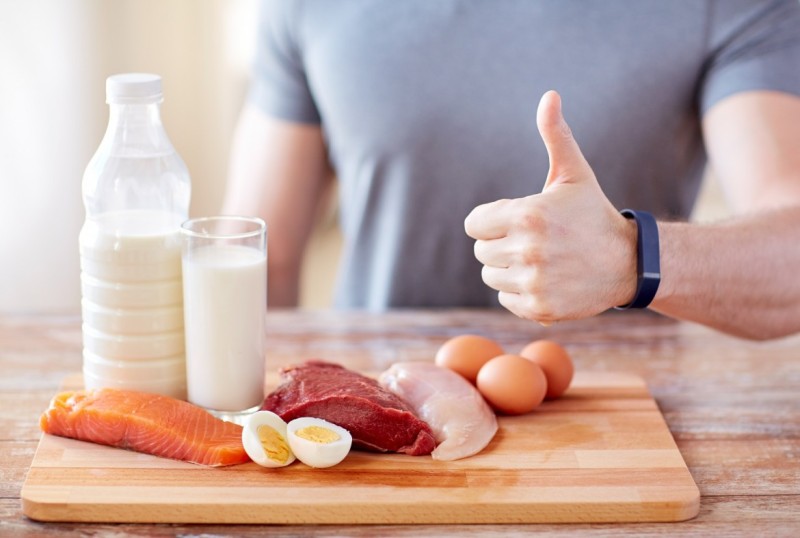
Many previous articles have discussed the importance of eating a sufficient amount of quality protein. Higher-protein diets help to regulate blood-sugar, which helps to maintain insulin levels. When insulin levels are constantly high from too many carbohydrates in the diet, the body can’t use fat for fuel well. Eating plenty of protein can help keep insulin levels lower. In addition, eating plenty of protein reduces hunger, or increases the feeling of fullness. Eating plenty of protein at the beginning of a holiday party can help you control your cravings for the other high-calorie foods. You may even want to drink a protein shake on the way to the party to reduce your hunger even more.
Drink plenty of water
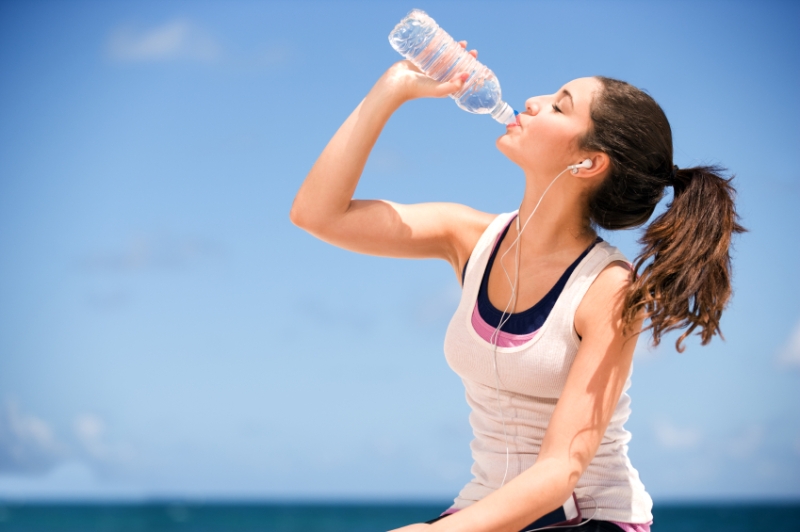
Drinking plenty of water helps fill your stomach, which can reduce the amount of food you can eat. As mentioned above, drinking a protein shake on the way to a party can help you feel more full, partly from the protein content and also from the amount of water in it. If you don’t have a protein shake available, at least drink a bottle of water en route. Try to drink another glass or two of water each hour during the party.
Choose your beverages wisely

While a glass of red wine has been shown to provide some health benefits, drinking alcohol is not usually included in a healthy eating article. However, it is a reality for many people during the holidays. Drinking alcohol has been shown to do little for satiety, meaning when you drink alcohol, it won’t help you feel more full, no matter how many calories are in it. If you are going to drink, it’s best to avoid mixed drinks which can have a lot of sugar.
Other festive drinks, like those at your favorite coffee house can be incredibly high in calories as well. Loaded with sugar, they do little to satisfy cravings for very long, and can quickly become a bad habit. A Grande Starbucks Peppermint Mocha has 440 calories. A cup of eggnog has about 350 calories. The worst part about these drinks is not the total calorie content, but the amount of sugar.
Don’t skip a workout, but don’t use a workout as an excuse to eat more

During the season of eating, it’s critical to stick to your exercise program. Strength training and higher-intensity cardio can improve your body’s ability to store the sugars you may be eating during the holidays. That said, workouts are not a license to eat. When people have the mentality that they can eat because they exercised, the metabolic effects of their workouts can easily be offset by a few high-calorie snacks.
Summary
An inevitable reality of the holiday season is that get-togethers will include a lot of special foods. One or two meals per week will not sabotage your fitness program if you’re strict to your plan during the rest of the week. When people indulge a little each day and indulge a lot at the holiday parties, it can easily lead to several pounds of new, unwanted body fat to start off the New Year with. Stick with the suggestions above and you may have a head start on your New Year’s program on January 1.
Thanks for reading. If you liked it and learned something new, please share it.
Have access to this blog and much more by downloading my iPhone or Android App 

Max Reynoso NASM-CPT, PES, CES, Physical Therapist Aide, Kettlebell Cert, Power Plate Cert. Metabolic Tech, is Fitness Professional at the Life Time Fitness in Gilbert, AZ. He’s been in the fitness field for 20 years helping people take control of the way the look and feel. If you wish to setup a Training Solution Consultation with him so he can review your current fitness status and help you design a plan of action for 2016, contact him at mreynoso@lifetimefitness.com or call 530-522-8483
 The food choices you make before exercise can dramatically influence the overall effect of the session, so it pays to have a good nutrition strategy to complement your workout efforts. Considering the wide range of individual nutrition needs and variety of exercise durations and intensities, I’ll lay out several approaches to help you hone in on a better pre-workout nutrition strategy for your program.
The food choices you make before exercise can dramatically influence the overall effect of the session, so it pays to have a good nutrition strategy to complement your workout efforts. Considering the wide range of individual nutrition needs and variety of exercise durations and intensities, I’ll lay out several approaches to help you hone in on a better pre-workout nutrition strategy for your program.
The most important considerations for pre-exercise nutrition are fuel availability to sustain performance goals and protein intake to prevent excessive loss or damage to muscle tissue during the workout. Whether your goals are to lose body fat, gain muscle mass, improve speed or increase strength, you must make efforts to fuel your workouts and nourish your hard-earned lean muscle, so you can reap the full benefits of the exercise stimulus.
Our bodies are remarkable in their ability to oxidize (burn) energy fairly easily from two primary sources, much like a hybrid engine can use gasoline or electricity. Our two primary fuel options, however, are carbohydrates or fat (lipids), and we often burn a blend of the two. A third fuel option for our bodies to burn is protein, but this source is usually only oxidized in extreme situations, such as exercising intensely while in a prolonged calorie deficit (such is the case with many chronic dieters).
Carbohydrates are internally available to fuel activity as glycogen (stored in muscle and liver) or blood glucose, but additional carbohydrates can be consumed before or during exercise to increase the amount of fuel available. Internal carb storage capacity depends on how much muscle tissue a person has, and it usually ranges between 1000-2000 calories worth of fuel.
The other major fuel for physical activity is found in internal fat stores and as free-floating fatty acids in the blood stream. The amount of available fat calories varies widely with body composition, but it can easily reach a few hundred thousand calories, so we always have exponentially more fat fuel available than carbohydrates.
Carbs are the fuel-of-choice for our cells when both carbs and fat are plentiful, so we’ll burn mostly carbs before switching over to the “fat fuel tank,” depending on one’s fitness level and workout intensity. Your individual fuel use can (and should) be measured, so you know how to best spend your exercise for max benefit.
There are additional ingredients that can support exercise performance and effectiveness known as “ergogenic aides” — compounds that are known to improve blood flow, help maintain lean tissue, support energy production, increase mental focus and decrease pain sensation, increase strength or power and protect cells from excessive free-radical damage during the workout. While these formulas don’t provide appreciable calories, they can be potent additions to your workout routine.
Life Time’s version of a performance supplement system is called StrengthStack. With 3-4 weeks of consistent use of a resistance-training program, it can boost performance during your workouts and enhance recovery between workouts.
If your goal is primarily fat loss, then your pre-exercise choices should focus on adequate protein and the “lowest effective dose” of carbs. Adequate protein is considered at least 20-30 grams of high-quality protein within two hours of the training session.
Include only low-glycemic carbohydrates (like oatmeal, vegetables or Generation UCAN) in amounts equal or less than your dose of protein — just enough to prevent exercise-induced low blood sugar, but not enough to force your body to burn mostly carbs through the entire workout. If your session is longer than 90 minutes, you may want to increase the carbs to reflect a 2:1 carb-to-protein ratio, but that’s where the aforementioned personal experimenting comes into play.
For those looking to gain lean mass (and presumably aren’t too worried about rapid fat loss), then you want to provide enough fuel (carbs) to power through your high-volume workouts along with ample protein to minimize the catabolic effects of the session. Generally, gaining strength, size or power by training hard needs to be supported by a Carb:Protein ratio in the realm of 3g:1g or 4g:1g with protein intake being 30-45g (making carbs closer to 100g pre-workout).
In short, it’s ok to surf the lower side of the carb spectrum for fat loss, provided you supply adequate protein. For muscle gain, it’s risky to go too low with your carb intake prior to exercise.
For low-to-moderate intensity workouts (having personal data from an Active Metabolic Assessment will tell you exactly what “moderate” is for you), it may not be necessary to fill up on carbs beforehand because low-to-moderate intensity sessions rely primarily on stored fat for energy.
Similarly, if your workouts are fairly short (<60 minutes) — even if higher intensity — you may not need to emphasize pre-workout carbs either. Our glycogen stores can usually support one to two hours of relatively high-intensity exercise (although it may not be the most pleasant experience, you’ll get through it).
Eating carbs before these relatively easy or short workouts could blunt your fat burning capability unless the carb of choice is Generation UCAN (which appears to increase ability to use fat for energy across a wide range of intensities). Just be sure to consume adequate protein or amino acids within the two hours prior to exercising to prevent excessive muscle breakdown.
When it comes to longer-duration (>60 minutes) or higher-intensity (at or above anaerobic threshold for significant amounts of time), then you will definitely want to include some long-lasting (slow-digesting) carbohydrates with your pre-exercise protein dose. How much? That depends on what your outcome goals are (as discussed above).
As we’ve discussed before on this blog, we’re big advocates of getting as much nourishment as possible from wholesome, unprocessed foods, but we’re also big proponents of using supplements to support good nutrition habits. The case for supplements is especially strong when pre-workout nutrition is the topic of discussion.
Getting fueled up for your workouts with whole food can be done, but that means you probably need to consume those solid foods at least 90 minutes prior to your workout session. For many morning exercisers, this would mean you’d have to wake up even earlier to prepare or eat your pre-workout meal and let it digest before you begin to reap the fueling benefits.
More convenient (and consistent) options like protein powder, branched-chain amino acids and carbohydrate supplements are tough to beat. These products are generally well-tolerated and readily absorbed into circulation even if consumed 30 minutes or so prior to hitting the gym. Based on these factors, many strength coaches and athletes view these items as staple components of the training program. They are effective, serve a purpose and make fueling properly easier and more consistent.
Personally, most of my exercise sessions happen early in the morning, and I’m not a huge fan of waking up at 4 a.m. to eat a meal for a 5:30 a.m. workout, so my go-to pre-workout routine is a liquid-only approach. On my way to the club, I’ll drink my StrengthStack PreWorkout Complex with BCAA Recovery. It’s easily absorbed within 30 minutes, and it helps me power through my workouts without missing a step. For longer sessions, I’ll add UCAN superstarch as my carbohydrate of choice.
When I get a chance to sneak in a lunchtime workout or evening session, I’ll adjust my meals according to the plan using the above logic and eat real food to support protein and carb needs.
This may seem complicated, but trust me — it’s not. Think about your pre-workout nutrition choices as if your results depend on them. (They do. A lot.) Choose to be prepared each and every time, and watch your fitness and body composition improve consistently.
Thanks for reading. If you liked it and learned something new, please share it.
Have access to this blog and much more by downloading my iPhone or Android App 

Max Reynoso NASM-CPT, PES, CES, Physical Therapist Aide, Kettlebell Cert, Power Plate Cert. Metabolic Tech, is Fitness Professional at the Life Time Fitness in Gilbert, AZ. He’s been in the fitness field for 20 years helping people take control of the way the look and feel. If you wish to setup a Training Solution Consultation with him so he can review your current fitness status and help you design a plan of action for 2016, contact him at mreynoso@lifetimefitness.com or call 530-522-8483
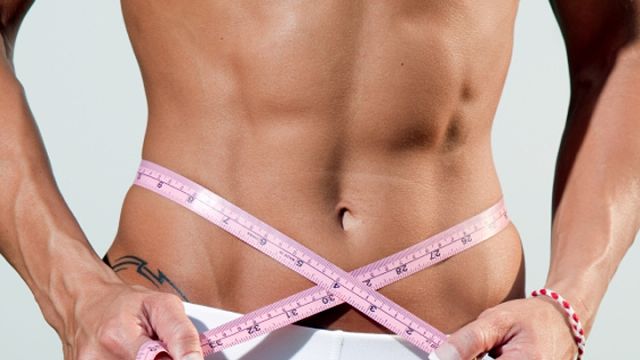





Thanks for reading. If you liked it and learned something new, please share it.
Have access to this blog and much more by downloading my iPhone or Android App 

Max Reynoso NASM-CPT, PES, CES, Physical Therapist Aide, Kettlebell Cert, Power Plate Cert. Metabolic Tech, is Fitness Professional at the Life Time Fitness in Gilbert, AZ. He’s been in the fitness field for 20 years helping people take control of the way the look and feel. If you wish to setup a Training Solution Consultation with him so he can review your current fitness status and help you design a plan of action for 2016, contact him at mreynoso@lifetimefitness.com or call 530-522-8483
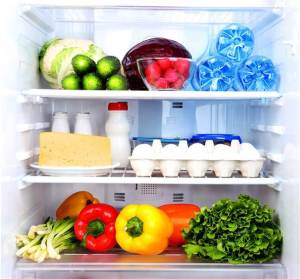
This is listed first with strong intentions. This is first and foremost where I dedicate my time and attention. My eating goals, habits, and actions all revolve around if I’ve properly stocked my fridge with healthy veggies and fruits, AND have them ready-to-eat (hence ‘prepped produce’). I know myself well enough and have had plenty of clients who have learned the same about themselves—if it is isn’t prepped, it isn’t eaten — and more than likely may be tossed at the end of the week. Consider how you want to use and/or consume these foods throughout the week, and prepare accordingly. The produce items I definitely prep are celery, berries, bell peppers, and grapes. Give them each a good wash or at least rinse in water and prep accordingly:

Every time we go to the grocery store, eggs are an item in the shopping cart. I once heard from a friend that while growing up her dad said, “Any time you go to the store, be sure to come home with eggs and toilet paper,” and I think that is pretty accurate! Eggs are more often than not what’s on the agenda for our breakfasts, whether they’re scrambled, over-easy, fried, in an omelet or an egg-bake– we easily go through an 18-pack during the week. Two of my favorite ways to prep eggs for quick and easy access in the fridge are hard-boiled (great for breakfast and snacks on the go), and egg bake or egg cups. With about 7 grams of protein per egg, including a couple in the morning can be a great start to your day or mid-day snack to keep your hunger and energy levels maintained. When shopping for eggs, it’s ideal to find ones that are organic (not treated with antibiotics and hormones) and pasture-raised (meaning chickens were allowed to free roam and eat plants/insects natural to them rather than conventional feed). These eggs are most nutrient-dense and provide the most bang for your buck.

Since discovering that we do best cutting out most dairy from our diet, I’ve switched our family to dairy milk alternatives such as coconut milk (other favs are almond and cashew milk). This beverage has also become a drink of choice for my toddler as well. Many parents do not realize that once your child turns one you do nothave to give them dairy milk, (unless of course other dietary restrictions are present) and there are other options. Dairy is one of the most prevalent food sensitivities for people, and unpleasant symptoms such as bloating, stomach aches/cramps, gas, diarrhea, constipation, skin rashes, fatigue, food aversions, headaches, etc. are just some examples of how food sensitivities may express themselves. Unsweetened coconut milk is a tasty beverage I use for smoothies, in cooking and baking recipes, or for variety with meals in place of water. As with many beverages, look for options that are unsweetened and ideally, not flavored.
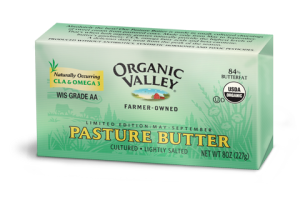
Butter makes everything better—especially butter from grass-fed cows. This refrigerator staple in my home is such an amazing multi-purpose ingredient so I always have some on hand. Join the movement in adding healthy fats back into your day and ditching your once highly-touted vegetable and canola oil for healthy saturated and monounsaturated fats. (Think fats that are found naturally in animals, nuts and seeds.) These important fats are a great source of energy, help nutrient absorption, support satiety and are necessary for hormone production. Saturated fat such as grass-fed butter is generally a better choice for cooking at higher temperatures as they are more stable with heat and do not oxidize to an unhealthy fat. Use a slab for cooking eggs or veggies, to grease a pan for baking, or my favorite—add it to flavor veggies and meats.
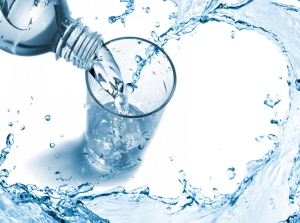
This is the water that helps keep me hydrated most frequently. Growing up, I wasn’t a huge fan of sparkling water, but that was most likely because I was comparing it to really sugary drinks. A few years ago I gave it a try again during D.TOX, and I was very pleasantly surprised. The carbonation and slight fruity flavor was so refreshing and a nice change of pace for beverage options. It became even more prevalent in my diet when I was pregnant and enjoyed mock-tails of sparkling water, mint leaves and lime. These days it is always stocked in my fridge and usually in an array of flavors, and has even spread in popularity amongst our team at work so we keep it stocked in that fridge too.

Confession: I may or may not eat this by the spoonful. Nut butters are so tasty, great to pair with fruits and even some veggies. And as a bonus, they’re also good for you! For those of you who may be slightly confused as to why this is a refrigerator item of mine rather than a pantry item, it’s because I choose natural nut butters which often require refrigeration. Similar to dairy, peanuts and peanut butter are one of the most inflammatory foods, often causing many people to have a sensitivity or intolerance to them. As a best-practice, I always recommend varying all foods but especially nuts and nut butters. Great alternatives to peanut butter include almond butter, cashew butter, hazelnut butter and even sunflower nut butter! Each of them has a slightly different and unique taste to them, so try them all to find which one you personally prefer. Opt for unsweetened, natural and minimal added ingredients (the nut, oil, and salt).

The meats you will most commonly find in my fridge are grass-fed ground beef or bison, organic pasture-raised chicken, pork and wild-caught salmon. Typically while grocery shopping for the week, I pick 2-3 protein options for meals, and it’s often based on what is on sale! While quality protein options are more expensive than your conventional choices, the few extra dollars are a value that is hard to put a price-tag on, as what you eat impacts your overall health. Meaning—how the animals are raised (how/where they’re raised and what they consume) largely dictate their meat composition and nutrient value. The variety of meats in the fridge allow for different meals and recipes throughout the week, like some of my favorites: tacos (or taco salad), grilled chicken breasts and meatballs. When you plan your meals around protein and veggies, the eating healthy becomes so much easier to do.
Hopefully these fridge tips help you prep not only for the week, but help you make strides in a healthier way of life, long-term. Start small, and incorporate just one of the above to add to your refrigerator this week.
Thanks for reading. If you liked it and learned something new, please share it.
Have access to this blog and much more by downloading my iPhone or Android App 

Max Reynoso NASM-CPT, PES, CES, Physical Therapist Aide, Kettlebell Cert, Power Plate Cert. Metabolic Tech, is Fitness Professional at the Life Time Fitness in Gilbert, AZ. He’s been in the fitness field for 20 years helping people take control of the way the look and feel. If you wish to setup a Training Solution Consultation with him so he can review your current fitness status and help you design a plan of action for 2016, contact him at mreynoso@lifetimefitness.com or call 530-522-8483
I’ve been a Metabolic Tech for Life Time Fitness for 5 years and over the course of sitting with over 4,000 members, I’ve collected alot of questions from them prior to purchasing their assessment. Today I’m going to share those questions and my answers so that you can understand completely how important this assessment is IF, IF, results its what you are looking for. I structured the Q & A in a conversational order to paint a better picture and to make it easier to follow.
Max Reynoso’s Top 10 Questions and Answers About Metabolic:
The debate over how much carbohydrate and fat people should eat often overshadows the importance of protein intake. This is unfortunate, since protein plays such a hugely important role in health, fitness, and performance.
One of protein’s most important roles is in the maintenance of lean body mass, or muscle. There’s no doubt that muscle improves overall function and performance, and helps improve body composition. Even more important, muscle mass is a major factor in long-term health and quality of life.
Protein is key to maintaining lean body mass. But how much is really necessary?
If you’re young, you might be surprised to find out that you don’t need as much as you may think. If you’re in the second half of life, you might also be surprised to find out that you need more than you probably eat.
This article scratches the surface of the value of higher protein intakes and addresses a few common myths. Protein is a meaty topic. It would take far more space than a single blog post to cover the topic, so I’ll cover other aspects of the protein discussion in future articles.
Also, to limit the scope of the discussion, we’re talking specifically about protein and not focusing on the sources other than the difference between animal and plant-based protein, or different animal proteins like conventional vs. grass-fed or wild caught.
What Are We Talking About?
When we talk about protein, we’re generally referring high-quality protein sources, including meat, eggs, fish, poultry, wild game, whey and other dairy proteins.
We can also include a few plant-based sources of protein such as a mix of pea and rice protein powder, or protein from soy. However, we tend to steer people away from soy due to it being highly allergenic, commonly being genetically modified and still controversial surrounding soy’s effects on hormones.
To keep things simple, we’ll talk about intact proteins rather than getting into the details of specific amino acids. I’ll reserve that topic for another time.
Unlike fat and carbohydrate, the human body cannot store extra protein for use at a later time. It must continually be supplied through the diet, in order to make available all the essential amino acids the body needs each day.
That makes daily protein intake pretty important.
Effects of Protein On Lean Mass
Protein consumption does three things related to lean mass.
First, protein breaks down to amino acids. Amino acids are the building blocks for virtually every tissue in the body, including muscle. If you don’t provide enough essential amino acids (EAAs) through your diet, your body won’t have what it needs to maintain health and support the maintenance of bone and muscle tissue.
Certain diseases increase amino acid needs, which is why it’s difficult to maintain muscle when one is sick. Though muscle is not an intended storage space for amino acids, in extreme circumstances, the body will break down its own muscle tissue to supply amino acids to other areas of the body.
Second, protein consumption stimulates protein synthesis. Third, it reduces protein breakdown.
Protein synthesis is the process of assembling amino acids and building tissue, like muscle. At the same time as the body is building up proteins and tissues, it also breaks them down.
When the rate of protein synthesis is greater than protein breakdown, the body produces a net increase in lean body mass. When protein breakdown exceeds synthesis, the body loses lean body mass.
Protein Synthesis and Anabolic Resistance
One of the most fascinating aspects of protein research in recent years has been the finding of “anabolic resistance.” Anabolic resistance is a reduction in the body’s response to protein synthesis stimulus.
To get the same positive effect from protein intake, individuals with anabolic resistance require a greater stimulus – larger amounts of protein or a greater relative intensity of exercise – to get the same effect.
Aging, insulin resistance and obesity can contribute to anabolic resistance.
In healthy, young adults, a meal containing 20-30 grams of quality protein maximally stimulates protein synthesis. Later in life, a much higher amount of protein is required to achieve the same effect.
In healthy young adults, 20 grams of whey protein was sufficient to maximally stimulate protein synthesis following exercise. However, in older adults, 40 grams was required to maximally stimulate protein synthesis..[ii]
Older adults may benefit from more frequent feedings as well. By eating a sufficient level of protein, multiple times each day, they can increase the overall anabolic effect on the body.
Basically, as we age, we need more protein, more often.
It sounds simple enough, but older adults have less of an appetite, so they easily miss meals. When they do eat, they may not eat a protein amount large enough to fully stimulate protein synthesis. Supplementing with extra protein can be especially beneficial for older adults.
As mentioned, obesity and insulin resistance may also lead to anabolic resistance. To maintain lean mass, these individuals may need higher protein intakes than normally as well.
Reducing Protein Breakdown
Caloric restriction or starvation, chronically high cortisol levels, certain drug therapies, reduced activity levels and other nutrient deficiencies can also trigger protein breakdown.
Typical weight loss programs are a common cause of protein breakdown. During weight loss, 20% or more of body weight reduction can come from the loss of lean mass. Higher protein intakes help to lessen the loss of lean mass and help to preserve normal metabolic rate.
Just as protein intake stimulates protein synthesis, it can also slow the rate of protein breakdown at rest or during exercise.
Where protein intake seems to reach a cap with 20-40 grams of high-quality protein, rates of protein breakdown continues to be reduced with increasing protein intake.
A 2013 study showed that when individuals consumed 80% of their protein intake for the day in a single meal, the overall anabolic effect from the day’s protein consumption was greater than when they were divided over evenly throughout the day. This flies in the face of the idea that you can only benefit from 20-40 grams of protein in a single sitting.
What the study showed was that there was a more powerful anabolic effect from a very high protein intake in a single meal as opposed to more moderate intakes at multiple times. What it did not show was whether there was benefit to eat multiple very high-protein meals. Is it possible that multiple, high-protein meals would be even better? Would a much higher protein intake of for the day have an even greater anabolic effect?
A recent study published in the Journal of the International Society of Sports Nutrition used a protein intake of 4.4 g/kg body weight, or 2 g/lb body weight. This is a huge amount of protein, and led to a significant calorie surplus. The comparison group in the study ate just under 2 g/kg of protein.
The high protein group consumed an extra 800 calories per day. Based on the idea that all calories are the same, consuming an extra 800 calories per day should have led to body fat gain. However, the high protein group gained no fat. In fact, the high protein group didn’t gain any weight at all.
Besides helping to refute the idea that weight management is simply about calories in and calories out, this study also showed that at a certain point, there’s no benefit to additional protein intake for increasing lean body mass.
After around 1 g/lb body weight of protein intake each day, there isn’t a muscle-building benefit to more protein, assuming calorie needs are met and an individual isn’t using anabolic steroids.
Protein Quality
Protein quality is determined by the concentration of essential amino acids. Much of the research on protein intake has been done on dairy proteins, and more specifically on whey protein.
Whey is unique because of its very high concentration of EAAs. In the research, it appears that most protein source have a similar effect, provided enough is consumed to reach a certain threshold of essential amino acids. This would suggest that even plant-based protein sources could provide enough amino acids to stimulate muscle growth. It’s just more challenging to achieve the same volume of essential amino acids found in 20-30 grams of whey, eggs or beef, from eating rice and beans or other plant proteins.
That’s not to say it can’t be done. It just requires much more planning for those who want to optimize lean mass and bone density while following a vegan diet.
How Much Protein?
Protein requirements vary dramatically based on one’s genetics, age, activity level and more. The standard recommendation for protein has been 0.8 g/kg body weight (0.36 g/lb). This amount was determined decades ago and was thought to be an amount sufficient to avoid significant tissue breakdown in healthy individuals.
Although many dietitians still use this low level of protein as a recommendation for clients or patients, in most cases, it is woefully inadequate.
Studies show that protein intakes of between 1.6-2.4 g/kg provide better benefits than lower protein intakes, but there is likely a point at which higher protein intakes no longer provide lean mass improvements. That doesn’t mean intakes beyond 2.4 g/kg are detrimental, only that they may be unnecessary for maximizing lean body mass.
The timing of meals affects the body’s response to protein as well.
The anabolic effects of protein consumption seem to last for 3-6 hours. If someone eats again before their protein synthesis levels return to normal, the meal will not have the same kind of stimulus as when meals are properly spaced apart. This means for most people, eating 3-4 times per day is sufficient.
Protein requirements tend to go up during fat loss programs, which makes a percentage-based protein requirement difficult. A 150-lb female attempting to lose weight may maintain body fat levels at 2200 calories per day. If she takes in 150 grams of protein per day, that is 27% of her diet. If she follows a fat loss program and ends up consuming 1700 calories per day, her 150 grams of protein become 35% of her diet. Dietitians who limit their clients to protein intakes of 25-30% of calories can create nutrition plans with plans that don’t provide enough protein.
Because protein requirements influence body weight or lean mass so much, it makes more sense to use body weight or lean mass weight as a marker to determine protein needs.
Using body weight, 1.6-2.4 g/kg body weight per day would probably be ideal. To simplify it, aiming for 1 g/lb body weight (or target body weight for overweight individuals) makes sense.
One last point on the protein topic. Inevitably, every time higher protein intakes are discussed, someone asks about the effects on the kidneys.
This is one of those myths that keeps getting repeated. High protein intakes are not good for someone with kidney disease, just like water consumption is detrimental for someone who is drowning. That doesn’t mean protein, or water, are bad for someone who is healthy.
There is no indication that higher protein intakes are bad for the kidneys in healthy individuals. Of course, you should never assume you’re healthy without a blood test to confirm it.
To summarize the information above, and make it practical:
•In young adults, 20-30 grams of an EAA-rich protein like whey, is sufficient to maximally stimulate protein synthesis in a meal. Older adults need larger amounts in a meal for the same benefit.
•Protein intakes beyond 20-30 grams may not further increase protein synthesis, but they may further reduce protein breakdown compared to lesser amounts.
•Protein should be consumed at least 3-4 times per day, in amounts that meet or exceed the minimum amount for optimal protein synthesis to get the most anabolic benefit.
•The ideal amount of protein for the average, healthy, not-exercising at extreme volumes, getting-enough-sleep, middle-aged person is probably somewhere between 1.6-2.4 g/kg. One gram per pound body weight is a reasonable amount to target, provided it’s spread over at least 3-4 relatively even meals.
•Excess protein is unlikely to contribute to body fat gain, but won’t further increase muscle mass once optimal intakes have been achieved.
Thanks for reading. If you liked it and learned something new, please share it.
Have access to this blog and much more by downloading my iPhone or Android App 

Max Reynoso NASM-CPT, PES, CES, Physical Therapist Aide, Kettlebell Cert, Power Plate Cert. Metabolic Tech, is the Training Asst. Department Head at Life Time Fitness in Gilbert, AZ. He’s been in the fitness field for 17 years helping people take control of the way the look and feel. If you wish to setup a Training Solution Consultation with him so he can review your current fitness status and help you design a plan of action for 2015, contact him at mreynoso@lifetimefitness.com or call 530-522-8483
Are you eating enough healthy fat? Losing body fat is a tricky dance that involves creating a slight but consistent energy deficit while achieving more adequate intake of nutrients to maintain or increase metabolic rate – all while controlling hunger and willpower in an unfriendly food world. It’s a choreography that many try but few truly master. If only they used more butter… Does it sound too good to be true? Let’s take apart what really happens when we incorporate more healthy fats into our diets and why it becomes easier to shed the body fat we want to lose.
First off, let’s note that dietary fat and body fat are two very different substances. Eating the former does not automatically cause the latter to accumulate. To be clear, eating dietary fat does not determine your fatness. In fact, restricting dietary fat often doesn’t produce as much weight loss as diets that allow more liberal amounts of fat. Maybe you’ve figured that out in your own transformation experience.
If you’re eating a low fat diet, you’re probably hungrier and more sluggish than you should be.
We’ve been eating less fat in this country for almost 40 years now, and we’ve never seen such debilitating metabolic problems plague so many people. When fat is reduced or removed from our food, it’s often replaced with refined sugars, salt, or non-food substances to make it somewhat palatable. As we’ve discussed in previous posts, these alterations set in motion a host of hormonal shifts that negatively affect health and weight regulation.
Our bodies needs dietary fat to thrive. Without certain dietary fats, the brain will become a less powerful and less efficient operating system. Our learning capacity and ability to form new memories can be compromised. Without dietary fats, it’s nearly impossible to maintain sufficient sex hormone levels. Each and every cell in our bodies is covered by a membrane, which is supposed to allow nutrients into cells and waste products out – vital functions tooverall metabolic health. The integrity and functionality of these membranes require (you guessed it) healthy fats.
Unfortunately, eating edible food-like substances pumped full of fat-replacing carbs and additives isn’t especially good for hunger control.
Sure, we can get plenty of energy (calories) for our bodies to burn (or store), but without fat we fail to trigger satiety signals and suppress the hunger hormone ghrelin.
You see, when we eat fat, our small intestine releases a hormone called cholesystokinin (CCK) which is supposed to stimulate gall-bladder emptying and suppress ghrelin. No or low fat means weaker hunger suppression, which leads to more frequent hunger/eating.
Some even suspect the weight loss benefits of higher fat, lower carbohydrate diets is directly a result of this hunger-dampening effect – a sort of intuitive calorie reduction leading to decreases in weight and body fat.
Eating more fat can help more than just hunger.
You know the saying, “You are what you eat”? It could also be, “You burn what you eat.” Our bodies really hate to burn protein but really like burning either fat or carbs (in the form of glucose).
When we increase our fat intake (and correspondingly reduce sugar or total carb intake), internal fuel control switches get flipped in a way that makes it harder to store fat and easier to release it to be burned. We see a slower and lower rise in blood sugar compared to meals containing mostly carbohydrates, which results in steadier energy levels from meal to meal.
Mildly restricting carbohydrates and incorporating more fat (or protein) leads to lower insulin loads.
Lower insulin levels are an important step in allowing fat to be released from adipose tissue and taken up by working muscles or organs. Hormone sensitive lipase (HSL) is more easily activated, which signals our fat cells to break triglycerides into free fatty acids (FFA’s), which are then carried through the bloodstream and readily burned by the brain, heart, and muscles (especially during aerobic activity). In fact, shifting to a higher fat diet even shows promise for directly increasing the amount of fat burned during exercise!
You may be wondering how these higher fat diets affect cholesterol or cardiovascular disease risk. Well, it appears every time researchers pit low-carb (higher fat) diets against low-fat diets, nearly all health indicators appear better in the higher fat (lower carb) groups. To boot, the lower carb folks almost always lose more total weight, always maintain more muscle, and see more frequent blood pressure or diabetes medication reductions than those following standard lower or moderate fat recommendations.
Some medical professionals are more excited than ever at the prospect of using a liberalized fat, lower starch/sugar diet as a first-line therapy for those with diabetes and possibly for those at risk for developing diabetes (which, quite honestly, includes the majority of us).
Eating lower carb is not to be confused with no-carb, however. In fact, the metabolic benefits I’ve mentioned above can be seen even if relatively active people adopt Healthy Way of Eating habits 80% of the time.
As you increase the fat in your diet, it’s important to make sure you’re cutting out the high-glycemic, processed carbohydrates. (More on this in an upcoming post…) Additionally, take note of which fat sources are genuinely healthy fats. While there are benefits to every type of naturally occurring dietary fat (mono-unsaturated, poly-unsaturated and saturated fats), processed fats (e.g. trans fats, interesterified fats, refined oils) or inappropriately heated or stored fats can be counterproductive to both your health and weight loss goals.
Finally, shifting dietary balance is a highly individualized process that should take into account several lifestyle, activity, and nutritional status factors. Everyone in the research studies I mentioned worked regularly with nutrition experts throughout their programs, and you should too!
If you’re considering a change or are trying to figure out your next nutritional move, talk to me either by email or phone. I would love to help you.
Have access to this blog and much more by downloading my iPhone or Android App 

Max Reynoso NASM-CPT, PES, CES, Physical Therapist Aide, Kettlebell Cert, Power Plate Cert. Metabolic Tech, is the Training Asst. Department Head at Life Time Fitness in Gilbert, AZ. He’s been in the fitness field for 17 years helping people take control of the way the look and feel. If you wish to setup a Training Solution Consultation with him so he can review your current fitness status and help you design a plan of action for 2015, contact him at mreynoso@lifetimefitness.com or call 530-522-8483